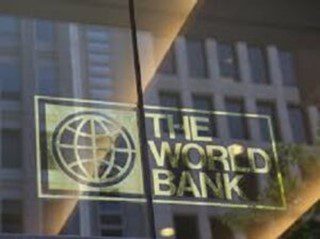The World Bank projects the global economy will grow by 2.7% in both 2025 and 2026, a steady performance that mirrors growth rates in 2023 and 2024. However, this growth is considered lackluster, running 0.4 percentage points below the 2010-2019 average. The sluggish pace reflects the lingering impact of “adverse shocks of recent years,” including the COVID-19 pandemic and Russia’s invasion of Ukraine.
Despite this, the bank’s latest Global Economic Prospects report, released in January and June, offers some positive news. Global inflation, which was over 8% two years ago, is expected to slow to an average of 2.7% in 2025 and 2026, aligning more closely with the targets set by many central banks.
The World Bank, which consists of 189 member nations, is dedicated to reducing poverty and improving living standards by providing grants and low-interest loans to poorer economies. For low- and middle-income countries—referred to as developing economies—the bank forecasts growth of 4.1% in 2025, with a slight slowdown to 4% by 2026. However, the World Bank has warned that this sluggish pace of growth is “insufficient” to alleviate global poverty.
The bank also highlighted a long-term trend of decelerating growth in developing nations. From an average of 5.9% annually in the 2000s, growth slowed to 5.1% in the 2010s and has further dropped to just 3.5% in the 2020s. When excluding China and India, these developing countries are trailing behind wealthier nations in terms of per-capita economic growth.
Developing economies have been hindered by several challenges, including sluggish investment, high debt levels, the rising costs of climate change, and growing protectionism that negatively impacts their exports. These issues are unlikely to resolve quickly. As World Bank chief economist Indermit Gill stated, “The next 25 years will be a tougher slog for developing economies than the last 25.”
The world’s poorest countries, with per capita annual incomes below $1,145, experienced just 3.6% growth in 2024, largely due to escalating conflict and violence in regions like Gaza and Sudan. Gill highlighted, “We have all-out war in Europe, in the Middle East and in Africa. Conflicts are the worst economy killers.” The bank projects that low-income countries’ growth will rebound to 5.7% in 2025 and 5.9% in 2026, though this is contingent on a reduction in conflict in certain areas.













